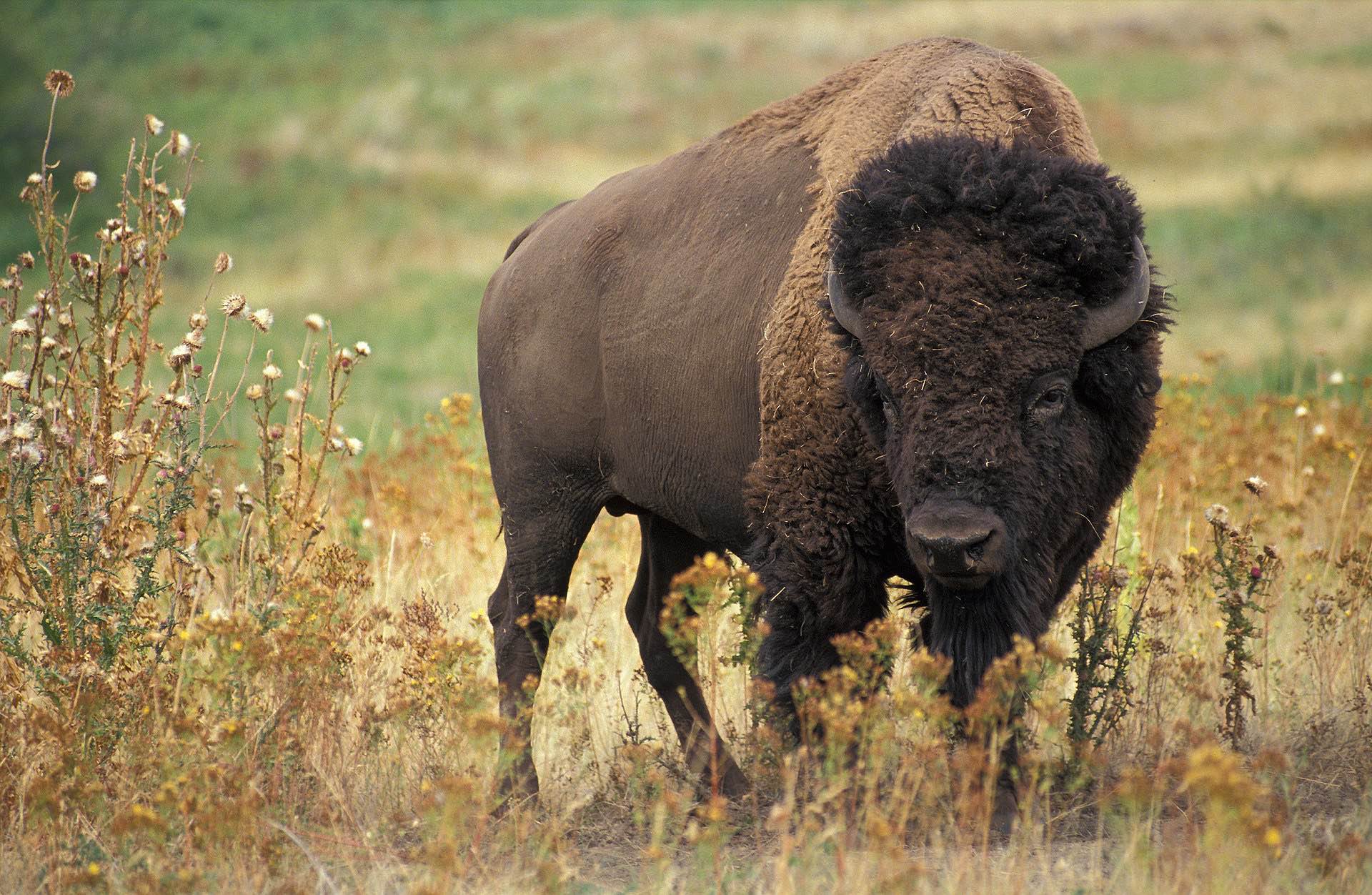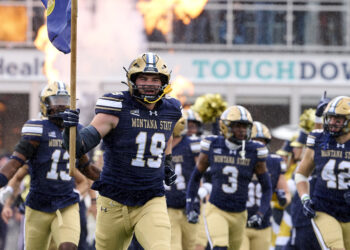By Patrick Reilly MISSOULIAN
ASSOCIATED PRESS
MOIESE – The U.S. Fish and Wildlife Service diverted roughly a third of the National Bison Range Complex’s budget in 2015 and never gave it back.
The shrunken budget hobbled staff, slashed Visitor Center hours, and left buildings in disrepair at a place often referred to as the crown jewel of the U.S. National Wildlife Refuge System.
A 10-month investigation by the Missoulian charted a years-long funding crunch at this group of National Wildlife Refuges, one that began when the Fish and Wildlife Service kept $624,076 intended for the Bison Range Complex at its Denver Regional Office.
Fish and Wildlife Service financial records indicate the Bison Range Complex’s annual budget dropped from as much as $2.7 million from 2012 to 2014, to as little as $1.2 million in the years since.
By May 2017, Bison Range manager Jeff King was warning his superiors that “we are (past) the muscle and bone and in to the marrow on our ability to even manage our highest priorities, and even those things are suffering.”
Until last year, King oversaw the National Bison Range Complex, which includes six protected areas in Lake, Sanders and Flathead counties. The largest, best-known of these is the National Bison Range itself, founded during Theodore Roosevelt’s push to preserve America’s lands and wildlife. Its bison, elk, bears and bighorn sheep draw tourists from all over the world.
It also sits within the Flathead Indian Reservation, and recent decades have seen a heated dispute over its management among the Fish and Wildlife Service, residents, environmental groups and the Confederated Salish and Kootenai Tribes.
The $624,076 set aside in 2015 was to fund an expected agreement between the Fish and Wildlife Service and the tribes to manage the refuge together. That pact fell through, and the Fish and Wildlife Service transferred the money elsewhere. The Fish and Wildlife Service’s regional leaders maintain the agency had the authority to do so, and that the money could only have covered costs associated with the agreement.
But hundreds of pages of Fish and Wildlife Service records, obtained through the Freedom of Information Act, mark these as operational funds, meant to help pay for the refuge’s needs. Records show that the Bison Range has seen:
- staffing cut by more than half between 2015 and 2019,
- crumbling infrastructure, such as cracks in the Visitor Center,
- rotting areas along its 15-mile perimeter fence, potentially endangering wildlife and the public.
“You have placed us in (a) situation that will almost certainly put us in a position to continue failing and struggling, on many levels,” King wrote to Refuge Supervisor Bernie Petersen in 2017, as a major planning effort began.
Fraught history
It was the latest chapter in a fraught history that began in 1908, when Congress established the Bison Range within the Flathead Indian Reservation. The Confederated Salish and Kootenai Tribes have deep ties to the area and its namesake bison. Over the years, they won compensation for the land and sought a role in managing it.
In the 2000s, they tried to do so through annual funding agreements, in which federal agencies pay Indian tribes to carry out some of their work. The tribes and the Fish and Wildlife Service entered one such pact from 2005 to 2006, and another from 2009 to 2010.
The tribes faced intense opposition. Much of it came from two groups, the Blue Goose Alliance and Public Employees for Environmental Responsibility (PEER), which stressed the need for federal oversight at the Bison Range. Their arguments echoed those of environmental groups around the country that have fought efforts to privatize or transfer federal lands. But with the Bison Range, the Montana Human Rights Network said anti-Indian sentiment tinges both groups’ stances.
In 2010, a PEER lawsuit ended the tribes’ second annual funding agreement, beginning five long years of negotiations and environmental review for a replacement. In May 2015, when it finally appeared ready, the Fish and Wildlife Service proposed several new changes _ much to the tribes’ chagrin.
Then-tribal chairman Vernon Finley argued those changes “would dilute the Tribes’ participation in substantive management operations” at the National Bison Range. Several months of contention resulted in “a mutual agreement to pause” negotiations, remembered Will Meeks, the Fish and Wildlife Service’s assistant regional director for refuges.
Those talks never resumed. A few months into the “pause,” the Fish and Wildlife Service and the tribes began a more ambitious, ultimately unsuccessful effort to place the Bison Range into trust for the tribes, and the long-gestating annual funding agreement was forgotten.
As all of this unfolded, money that had been accounted for as part of the National Bison Range Complex’s 2015 budget sat at the Fish and Wildlife Service’s Denver Regional Office.
The Fish and Wildlife Service had set aside those funds to pay the Confederated Salish and Kootenai Tribes for positions they would have filled under the agreement. In fiscal year 2015, the complex received a base allocation of $1.8 million. Fish and Wildlife Service financial records indicate, and Will Meeks confirmed, that a $624,076 chunk of that allocation was kept at the regional level in anticipation of an agreement.
The Fish and Wildlife Service maintains that these funds were solely intended to pay for that annual funding agreement. In an email, agency spokesperson Michael D’Agostino described it as a “Placeholder Amount.”
Fish and Wildlife Service financial records make no reference to such an amount. They label the $624,076 as operational funds _ specifically, as part of the National Bison Range Complex’s “management capability,” money provided on top of salary and benefits. The complex’s fiscal year 2015 allocation sheet shows how it would have been spent: Roughly $284,900 would have gone to wildlife and habitat management, $202,500 to maintenance, $75,600 to conservation planning and $61,000 to law enforcement.
In 2016, National Bison Range budget analyst Karen Shoemaker saw a need for more management capability. In an email to Region 6 Budget Chief Gina Martinez, she wrote, “I sure hope NBR gets a significant bump as I don’t see how I can get NBR out of the red with the base allocation we just received.”
By the time she sent that request, the money had been transferred.
The Fish and Wildlife Service’s manual requires its staff to notify Congress of major “reprogrammings” of funds. Meeks argued that the decisions made with the National Bison Range’s budget didn’t require such a notification, but confirmed that the money wasn’t spent there.
“There’s nothing preventing me from using those dollars anywhere in the region, to include the Bison Range, but that’s not how we played that fiscal year out,” he recalled. After the agreement fell through, “keeping that money at the Bison Range was precluded by higher priorities.”
D’Agostino, the public affairs specialist, provided Fish and Wildlife Service documents describing these “priorities:” the recovery of several habitat types and species other than bison, various administrative improvements, a stronger focus on habitat conservation, and building a new “conservation constituency” centered around urban refuges.
“I would like to see how that money was actually spent,” said Paula Dinerstein, PEER’s senior counsel, after reviewing the Missoulian’s findings.
“Here you have this major refuge which is kind of going downhill, and to come up with some very general programs that don’t even apply to any specific refuge seems to me pretty weak.”
Fish and Wildlife Service staff have repeatedly stressed that the entire National Wildlife Refuge System faces lean budgets and maintenance backlogs. And moving funds like this is a common practice, the Fish and Wildlife Service’s D’Agostino wrote in an email.
“Funds that are ‘held’ at either a refuge or regional level and which subsequently are no longer needed for the specific purpose they were initially set aside for, are repurposed.”
He also said that in other years, funding has been repurposed from elsewhere in the refuge system to the Bison Range. Regardless, 2015 marked a drop-off in funds reaching the refuge complex. The money available to spend there ranged from $1.8 million to $2.7 million in fiscal years 2012 to 2014, but it’s hovered between $1.2 million and $1.5 million from 2015 through 2018.
“The current level of funding and staff is not normal, it’s not what it should be, and it’s not sufficient to run the refuge,” Dinerstein said. “If they could have more funding for an (agreement), they can do it for the refuge now.”
Fish and Wildlife Service staff have repeatedly stressed that the entire National Wildlife Refuge System faces lean budgets and maintenance backlogs.
Tribal attorney Brian Upton said the Confederated Salish and Kootenai Tribes had no comment on the Missoulian’s findings. PEER and its local allies, meanwhile, have continued to critique the tribes’ relationship with the Fish and Wildlife Service.
That group and its local allies, including the Blue Goose Alliance, have questioned the tribes’ ability to manage the bison range, drawing accusations of racism from the Montana Human Rights Network.
“At this point, it’s nearly impossible to determine where groups like PEER and Blue Goose Alliance end and the hardcore anti-Indian movement begins when it comes to the Bison Range debate,” wrote Travis McAdam, its research director, in an email to the Missoulian.
Dinerstein called that statement “almost too ridiculous for a response.” Via email, she noted that PEER has defended Native American interests elsewhere in the country, and wrote that “PEER and the current and former employees of the Refuge system on whose behalf it advocates are concerned about sharing the management of refuges with ANY outside group _ whether tribal, state, private or international.”
Visible problems
Pete Heyler of Evaro sees merit in PEER’s arguments. Whatever the group’s motives, he said he’s seen the results of the funding crunch firsthand.
“It’s just absolutely a gem of a place,” he said. And, he added, “as a citizen who loves the Bison Range. I hate seeing what seems to be going on.”
Heyler’s been a frequent Bison Range visitor since moving to Evaro about 20 years ago. Driving its tour road on a cloudy afternoon last June, he voiced one concern after another.
Many of his issues led back to staffing. In 2015, the Bison Range Complex allocation sheet listed 14.6 full-time employee positions, 3.5 of them vacant. In 2018, the Fish and Wildlife Service said it had 6.5 full-time employees stationed at the Bison Range, plus two at the Complex’s Lost Trail National Wildlife Refuge, nearly three hours away. The number was low enough to worry Heyler.
When he volunteered at the Visitor Center in 2017, “we did a little pitch about what’s going on, what to do, what not to do, all that kind of stuff.” Last summer, the building was closed two days a week, “so that raises a potential hazard.”
The physical infrastructure is in bad shape, too. When the Fish and Wildlife Service assessed it in September 2018, they found that the 38-year-old Visitor Center had no fire sprinklers or disability accommodations. Its walls showed “severe cracking,” and its roof needed replacement. A new shop building showed “serious settlement” in its foundation. Some boundary fence braces had rotted at their base “in at least a dozen places.”
That fence was faulted in April 2015, when six bighorn sheep left the Bison Range—probably, King said at the time, through holes bears had dug beneath the boundary fence. Bighorn sheep can contract pneumonia from domestic sheep, then infect other bighorns. To avert that outcome, tribal game wardens shot the six sheep. The following year, pneumonia nonetheless devastated the Bison Range’s bighorn population.
King would later call these deaths “a clear example” of the Bison Range’s funding and management woes. Bighorn researcher Jack Hogg believes that reduced funding may have contributed to the outbreak’s timing, but doubts that more staffing or better fence maintenance alone could have prevented it.
Heyler, meanwhile, could see these lapses leading to even worse problems.
“If there were a break in the fence, and because of the limited number of maintenance people they have on staff that break isn’t found, bison could get out,” he said.
“If bison can get out, well, (there’s) all kinds of problems associated with that.”
In 2017, on top of these problems, came the start of two major, parallel planning efforts for the Bison Range, on a much faster schedule than usual (see related story).
“I could spend this entire memo discussing the tremendous workload and burden this will be placing on me and my few remaining staff,” King wrote to Bernie Petersen, the refuge supervisor, in May 2017, urging that this labor-intensive, litigation-prone process be stopped.
“I would add that this decision is also a symptom of the continuous lack of inclusion and respect that plagues any decisions related to the management and future of the National Bison Range.”
Visitors’ appreciation
For all of these problems, visitors still treasure the crown jewel.
Just a few weeks into this season, people from as far away as Europe and Australia have dropped by the Wagon Wheel Gift and Gallery, just outside the Bison Range entrance. Its owner, Diane Breuer, recently got some good news.
“Apparently (with) extra staff that they’ve been given this year, they’ll be able to keep (the Visitor Center) open seven days a week, so that’s going to be a big help, because people are always disappointed when they come and part of the facilities are closed,” she said.
“The management people in Denver or wherever, I think they need to realize how many people from across the world come and see this area, and are just totally taken with what they’ve found here.”
Randy McNair, of Ronan, has been coming to the Bison Range for most of his 68 years, and last week, he rested at the refuge’s picnic area. With shade trees that block the spectacular Mission Mountain views, it’s one of the Bison Range’s less remarkable spots, except when the refuge’s full-time residents amble in. On one recent visit, McNair saw “two big ol’ bull elk right here.”
“I feel at ease when I come here” McNair said.
He gave the gentlest of nods to the long, tangled history built up here.
“It’s just a nice place,” he said. “Teddy had a good idea.”













